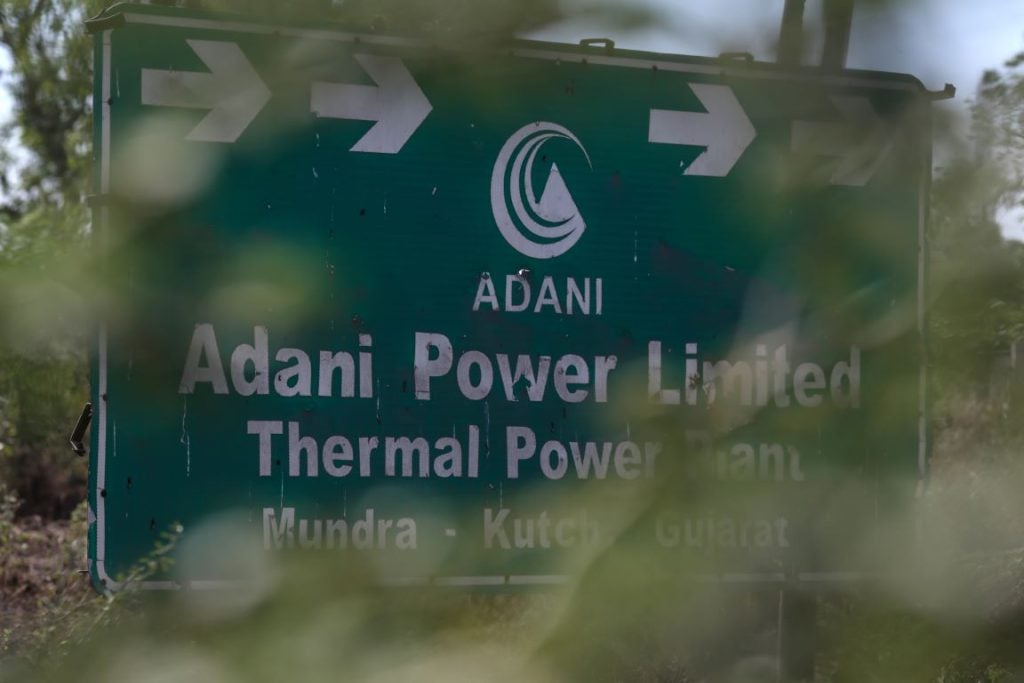
In an era driven by an urgent need for sustainable energy solutions, battery energy storage systems (BESS) have become increasingly vital.
According to data from Future Power Technology’s parent company, GlobalData, solar photovoltaic (PV) and wind power will account for half of all global power generation by 2035, and the inherent variability of renewable power generation requires storage systems to balance the supply and demand of the power grid. This considered, countries across the world have enacted policies and incentives to boost development of battery energy storage, from the US Inflation Reduction Act to China’s plans to install more than 30GW of energy storage by 2025.
A net-zero future requires stabilising renewable energy grids, which necessitates huge advancements in battery technology and implementation. We delve into some of the most compelling recent developments in battery energy storage that are propelling us towards a cleaner future.
Next-generation lithium-ion batteries
Lithium-ion (Li-ion) batteries have long been the industry standard for portable electronics, electric vehicles (EVs) and larger BESS. It is fairly straightforward why the industry has long preferred Li-ion for batteries: it is cheap, performs efficiently and has a deep discharge cycle life as well as power density, all of which combined make it ideal for commercial BESS.
However, ongoing research continues to push the boundaries of Li-ion performance and sustainability. Advancements in high-capacity nickel-rich cathode materials for Li-ion batteries are boosting the capacity and longevity of battery storage systems. Improvements in this area are of major importance to the industry – scientific advances can often bring the costs of BESS down, boosting penetration of the technology in the market, and any improvements in longevity have major sustainability benefits as new materials will be required less frequently.
Meanwhile, a new development from Massachusetts Institute of Technology (MIT) could make Li-ion battery systems more environmentally sustainable. A group of MIT chemists recently developed a new battery using organic cathode materials, instead of critical metals that are more common in Li-ion batteries such as cobalt or nickel – materials that require expensive and environmentally damaging mining processes to obtain.
How well do you really know your competitors?
Access the most comprehensive Company Profiles on the market, powered by GlobalData. Save hours of research. Gain competitive edge.

Thank you!
Your download email will arrive shortly
Not ready to buy yet? Download a free sample
We are confident about the unique quality of our Company Profiles. However, we want you to make the most beneficial decision for your business, so we offer a free sample that you can download by submitting the below form
By GlobalDataThe organic batteries are made with multiple layers of bis-tetraaminobenzoquinone, an organic molecule that forms strong hydrogen bonds, therefore making the material highly stable. The bonds also make the material incredibly insoluble, preventing the material from dissolving into the battery electrolyte and slowing degradation. The battery is stabilised with filler materials including cellulose and rubber, which further slow degradation of the battery.
Speaking to the MIT news website, Mircea Dincă, W.M. Keck Professor of Energy at MIT, says that the technology “is already competitive with incumbent technologies, and it can save a lot of the cost and pain and environmental issues related to mining the metals that currently go into batteries.”
With a capacity of 306 milliampere-hours per gram mass, the organic cathodes can deliver an energy density of 765 watt-hours per kilogram higher than most cobalt-based cathodes and charge-discharge in just six minutes. While the MIT researchers focused on this new material’s usefulness in EVs, it could soon have a major impact on grid-scale battery technologies.
Gravity, sand and other unlikely sources
While new developments in “traditional” Li-ion battery technologies are important and necessary, some changemakers are thinking outside the box for completely different ways of storing pure energy. By replacing traditional liquid or gel electrolytes with different sources, these batteries could add to the increasing suite of battery options available to tackle each unique energy storage challenge.
Australian start-up Green Gravity is harnessing the untapped power of physics to store excess renewable power in the form of gravitational potential energy. In brief, heavy weights are suspended in a disused mine shaft, attached to a generator that creates electricity when the weights are lowered into the shaft. When local supply of renewable power outstrips demand, the excess energy is used to raise the weights to the top of the mine shaft. When demand is higher, the weights are lowered, winding the generator and supplying green energy to the grid.
It is a remarkably simple system, yet it holds massive potential. One of the main issues holding back the mass rollout of renewables is the unpredictable nature of their generation: wind power and solar power are subject to massive peaks and troughs in their output from weather changes. Systems, like gravitational potential energy storage, that can respond with speed and agility to surges in demand or generation go a long way to mitigating this issue and stabilising the grid, making renewables more viable in the long term.
While the technology is still in the development stage, Green Gravity CEO Mark Swinnerton told Power Technology’s sister publication Mining Technology that the company is “completing technology development through the next 18 months, beyond which we expect to develop our first commercial-scale energy storage system for the grid”.
Another unusual technological development comes from Finland, where the vast variability in seasonal weather and the long, dark Nordic winters present an additional challenge for the stability of renewable energy supply. Given this geographical disadvantage, Finland-based start-up Polar Night Energy looked to a most peculiar source: sand.
At the Vatajankoski power plant, 168 miles north-west of Helsinki, sits the world’s first commercial-scale sand battery. Here, 100 tonnes of sand deemed too low-grade for building purposes is superheated to 600°C using renewable electricity, mostly from wind turbines and solar panels. This sand stores energy in the form of heat; when full, it can hold around eight megawatt-hours of thermal energy. When demand rises, the battery can immediately discharge around 200kW of power – enough to support heating and hot water for around 100 homes and a local swimming pool.
Sand has multiple advantages over Li-ion as a source of battery energy storage. The material is easier and more sustainable to source than many hard-to-mine minerals Li-ion batteries rely on. Sand can also story energy for a longer duration of time, in addition to not degrading over time. However, the downside is that it is only suitable for heat generation, not electricity. Still, every system has its pros and cons, and sand energy storage could well form part of the suite of solutions that keep our grids running smoothly.
The rapid pace of change
What is perhaps most exciting about the BESS industry at this moment is the pace at which new developments across technology, policy and deployment have come about. The “explosive” growth of the sector is a reflection of “a growing awareness that storage resources, particularly long duration storage resources, are critical for decarbonization”, says Gabe Murtaugh, director of markets and technology at the Long Duration Energy Storage Council.
A report released by RenewableUK in December 2023 showed that the pipeline of operational, under construction or planned energy storage projects in the UK has increased by more than two-thirds in capacity since 2022, from 50.3GW to 84.8GW. According to Eva Zimmermann, lead for flexible energy at Aurora Energy Research, the European BESS market shows the same trend, with “22GW of battery storage in the pipeline until 2026 alone”. She notes that even countries that don’t have any installed capacity at this moment will soon “go from zero to hero”.
“What is most interesting is the momentum for battery storage that is created through the appetite for battery projects on the developer and investors side, together with the increasingly strong political will of European governments to booster battery storage, as seen by Polish or Spanish support through the capacity markets, the BESS auctions in Greece, or the upcoming storage strategy in Germany,” Zimmerman says.
Many of the world’s largest energy companies – TotalEnergies, RWE and Vattenfall, to name a few – are quickly getting on board as well. Vattenfall has recently invested significant effort into BESS development, including the creation of several BESS projects in the UK, the most recent of which was brought online in October 2023.
Agreeing with Zimmerman’s prospects for the industry, Sebastian Gerhard, director of batteries at Vattenfall, tells Power Technology: “The speed, the scale and ramp up of the stationary storage industry is impressive. It happens on every value chain step: development, production, construction and operations.”
As Murtaugh puts it, we have seen an “explosive development of storage, innovative new ways to accommodate storage in existing markets, and exciting conversations around compensation mechanisms for storage resources for broader future participation in organised markets” in recent years. This trend is likely to continue; according to GlobalData, the market for battery energy storage is forecasted to more than double from $6.91bn currently to $14.89bn by 2027.
The outlook
As we look towards the promise of the clean energy revolution, battery energy storage will play an essential role. New technology, both that which improves upon existing technologies and that which pushes the boundaries, is increasing enthusiasm for the outlook of the industry. Governments and businesses are working to ensure that battery energy storage solutions are being implemented at pace, and more BESS projects emerge by the week.
“The most exciting development in this space is the growing sense of community between many of the key players in this industry and an increasing feeling that this community is ‘pulling in the same direction’ regarding decarbonisation,” Murtaugh says.







